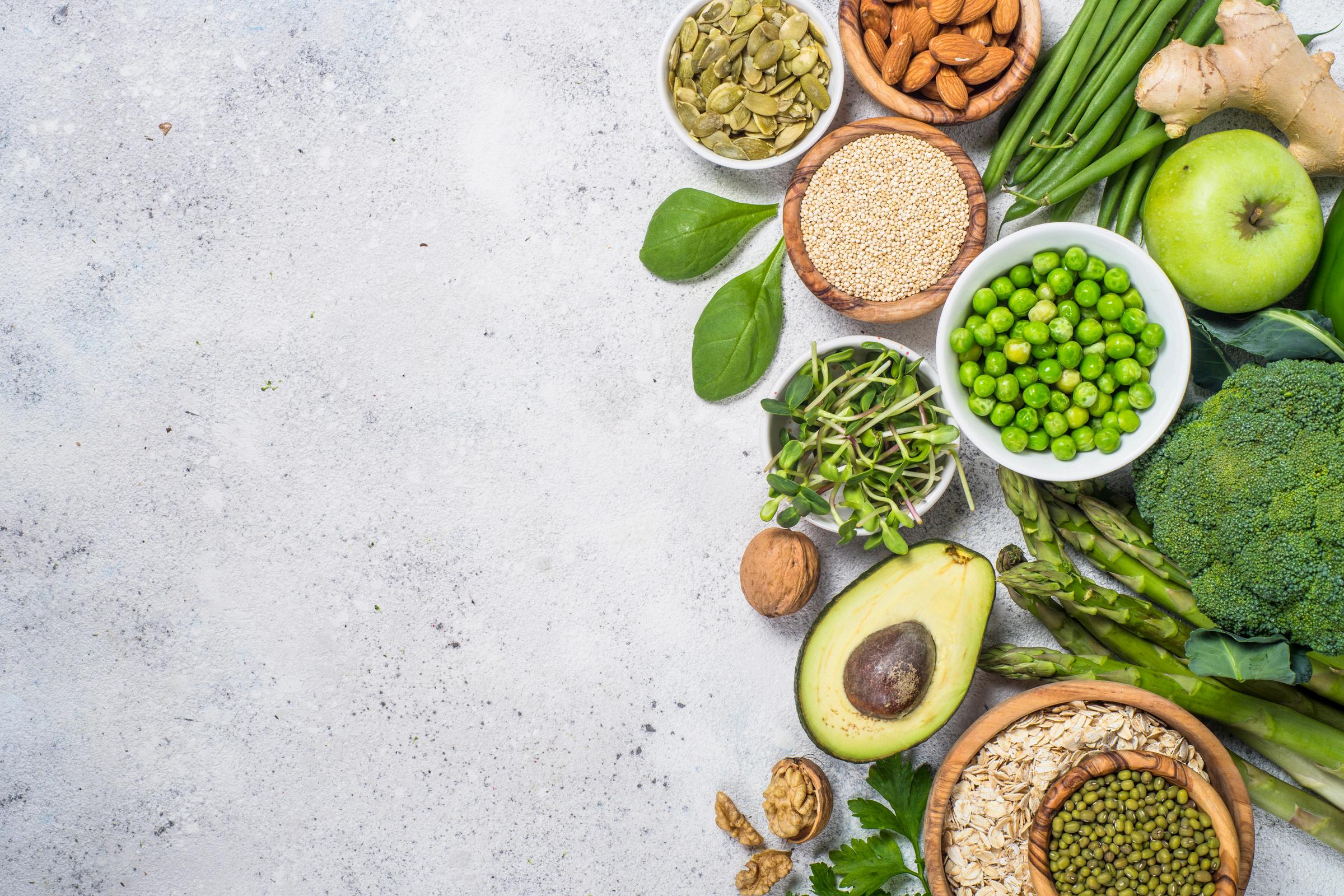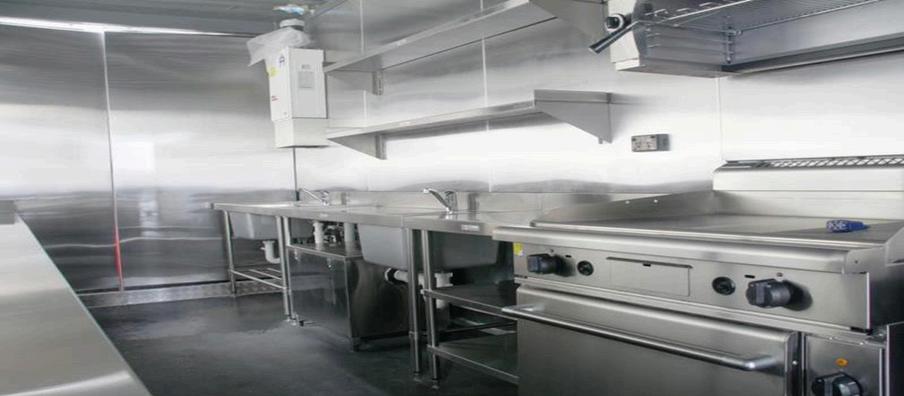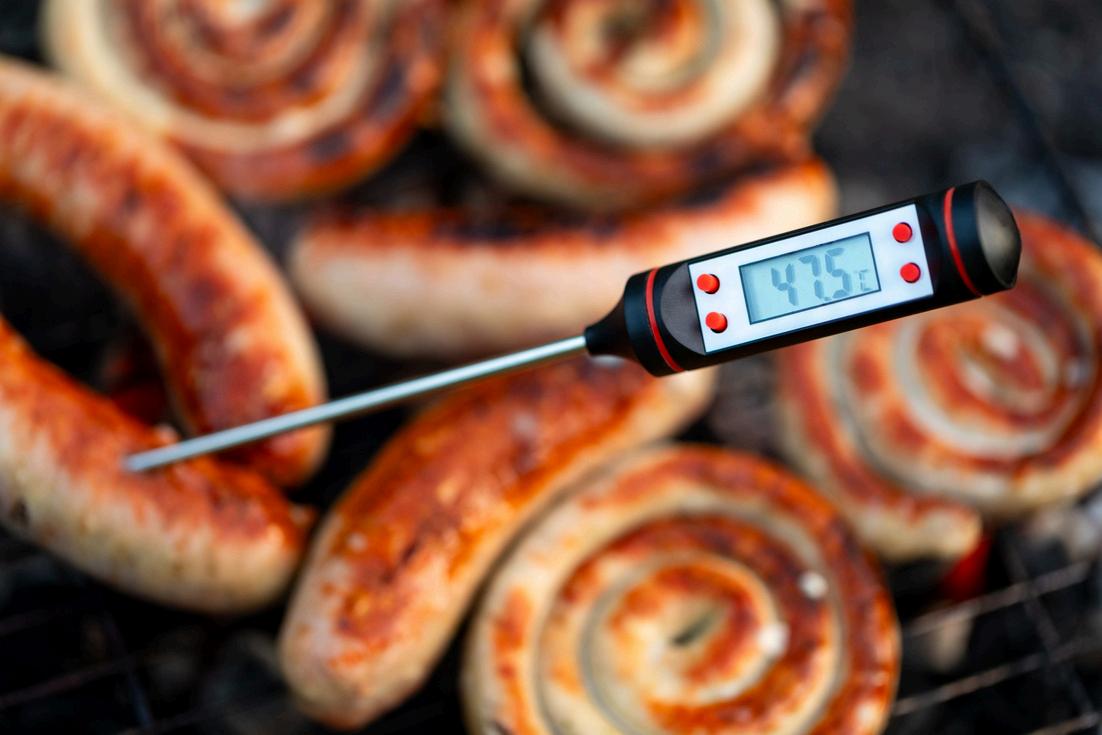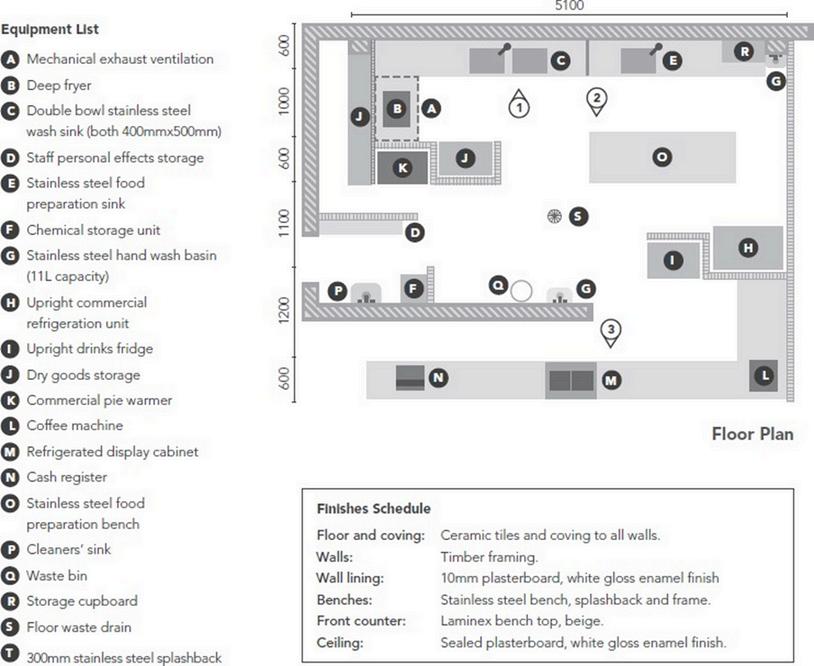DEVELOPMENT GUIDE



Introduction.
This guide has been produced to provide guidance for people establishing or altering a food premises within Hindmarsh Shire. Its underlining philosophy is that food will be preparedand/orstoredinapremisesthatis designed to minimise possible food contamination&promotesthesafehandling offood.
It has been developed in line with FSANZ Food Safety Standard 323, Food premises andequipment,fourtheditionFebruary2023. Copies of these standards are available on the Food Standards Australia New Zealand website at wwwfoodstandardsgovau or by contactingthemon(02)62712222
Existing premises are expected to make satisfactoryprogresstowardsupgradingthe establishmenttothesestandards
Contact should also be made with Council’s Planning and Building Services to determine whether additional permits are required. For information on outside seating and signs/boards, contact must be made with Council’sLocalLawsteamon(03)53914444
For further enquires, contact one of Hindmarsh Shire Council's Environmental HealthOfficerson(03)53914444
Note: An Australian Standard for the design, constructionandfitoutofFoodPremises(AS4674 – 2004) has been developed by Standards Australia. This Australian Standard provides guidance to food businesses and authorised officers relating to the design, construction and fit-out of food premises. The Australian Building Code Board is considering including specific requirements for food premises in the Building CodeofAustralia.

Part1:
FoodAct1984
FoodPremisesClassification
FoodSafetyPrograms
MinimumRecords
FoodSafetySupervisor-Food
HandlerTraining
DoFoodSafely-FreeOnline
FoodSafetyLearningProgram
PlansandSpecifications
Part2:
Structural&General
RequirementsRegistration
Floors
WallsandCeilings
Ventilation
Lighting
WaterSupply
Sewage&WasteWaterDisposal
Fixtures,FittingsandEquipment
HandWashingFacilitiesinFood Areas
Storage

Part1: General Requirements
FoodAct1984
The Food Act 1984 (Act) is a piece of legislation in Victoria, Australia, designed to regulate foodsafetyandensurethatfoodsoldinthestateissafeforconsumption.ThisActfocuseson the responsibility of food businesses in maintaining food hygiene, food handling practices, andensuringthatfooddoesnotposeanyhealthrisktoconsumers
KeyfeaturesoftheFoodAct1984include:
FoodSafetyStandards:Establishestheobligationforfoodbusinessestocomplywith foodsafetystandards,whichcovereverythingfromfoodhandlingtosanitationand hygiene.
LicensingandRegistration:FoodbusinessesinVictoriaarerequiredtoberegistered withtheirlocalcouncil,ensuringthatfoodpremisesmeettherequiredstandards beforetheycanoperate
FoodSafetyPrograms:TheActencouragesfoodbusinessestoimplementfoodsafety programstoensurecompliancewithhygieneandsafetystandards.
EnforcementandPenalties:Authoritiesareempoweredtoinspectfoodpremisesand takecorrectiveactionsifbusinessesarefoundtobeinviolationofthefoodsafety regulations Thiscanincludeissuingfinesorclosureorders
TheFoodAct1984isspecificallyfocusedonregulatingfoodsafetyatalocallevelinVictoria and was later amended to align with the broader Australia New Zealand Food Standards Codeandnationalfoodsafetylaws.
FoodPremisesClasification
Class1 Class2
Handles, processesor servesreadyto eatpotentially hazardousfoodto groups,most vulnerabletofood relatedillness(e.g. hospitalpatients, nursinghome residents,children inlongdaycare)
Suppliespotentially hazardous unpackagedfoods whichneedcorrect temperature controlthroughout thefoodhandling process,including cookingand storage,tokeep foodsafe(e.g. restaurants,take awayfoods)
Class3
Suppliesorhandles unpackagedlowrisk foodsorprepackaged potentially hazardousfoods whichsimplyneed refrigerationtokeep themsafe(egmilk bars,breadbaking) andsome communityevents
Class3A
Handles,processesorserves readytoeatpotentially hazardousfoodtoguestsfor immediateconsumptionat anaccommodationgetaway premises(eg B&B)orfood thatismadeusingahotfill process(e.g.chutney,jam etc)isacidic(pHoflessthen 46)andhassugarorsaltor anyotherpreservativeadded.
Prior to the business becoming operative, the proprietor must make an application on the prescribed form to register the premises as a food premises and receive the approval of Council’sEnvironmentalHealthServices.
FoodSafetyPrograms
AFoodSafetyProgram(FSP)isawrittenplanthatshowshowyourbusinesswillmanagethe safetyofthefoodyouprepare,serve,manufactureorsell.TherearetwocategoriesofFSP: aStandardFoodSafetyProgram;or aNon-standardFoodSafetyProgram
Under section 19V of the Food Act, proprietors of class 2 food services and retail food premisesareexemptfromtherequirementtohaveafoodsafetyprogramfortheperiodof5 years (from July 2022) except if one or more of the following food handling activities is undertakenatthefoodpremises:
(a)
(b)
(c)
(d)
(e)
(f)
(g)
(h)
sous vide cooking, (cooking at less than 75 degrees Celsius) where the food is cooked under controlled temperature and time conditions inside vacuum sealed packages in waterbathsorsteamovens; any potentially hazardous food that does not involve temperature control to minimise the growth of pathogenic or toxigenic organisms as described in Australia and New ZealandFoodStandardsCode,Standard322; preparationofacidified/fermentedfoodsordrinksthatarereadytoeatandhaveahigh levelofacidityrequiredtokeepfoodsafe,acidmaybenaturallypresentoraddedor; producedbythefood(duetomicrobialactivity); preparationofreadytoeatfoodscontainingrawunshelledeggs(unpasteurised); preparationofreadytoeatraworrareminced/finelychoppedredmeats; preparationofreadytoeatrawandrarepoultryandgamemeats; off-site catering where ready to eat potentially hazardous food is prepared or partially preparedinonelocation,transportedtoanotherlocation,wherethefoodisservedata cateringevent;
(i)
(ii)
(iii) pasteurisation/thermal processing, where food is heated to a certain temperatureforaspecifiedtime,toeliminatepathogenicorganisms; packagingfoodwheretheoxygenhasbeenremovedand/orreplacedwithother gasesforfoodsafetyortoincreaseshelflifeofthefood; any food processing activity which does not involve the use of temperature control, to minimise the growth of pathogenic or toxigenic organisms in food, as describedinAustraliaandNewZealandFoodStandardsCode,Standard3.2.2.
1. StandardFoodSafetyProgram
VariousFoodIndustryGroupshavedevelopedtemplatesaswellastheDepartmentofHealth (DH),whohavedevelopedtemplatesforClass2retailandfoodservicebusinesses
BusinessescanviewanddownloadDHtemplatesatnocostfromthefollowingwebsite: www.health.vic.gov.au/food-safety/food-safety-programs
2. NonStandardFoodSafetyProgram
Somebusinesses(e.g.largefoodmanufacturers,agedandchildcarefacilities)maywishto write their own - or employ someone to write their own - Food Safety Program. These businesseswillneedtobethirdpartyaudited.
Furthermore,aQualityAssuranceFoodSafetyProgramisaprogramforfoodpremisesthat has been issued with a certificate by an approved food safety auditor stating that the programhasbeenpreparedunderadeclaredsystemorcode,andthatitcomplieswiththe requirementsoftheAct.FoodpremisesthathaveaQAFoodSafetyProgramareexemptfrom the requirement to have a Food Safety Supervisor (FSS) as they are recognised via their QA system
MinimumRecords
Class 3 food businesses proprietors are exempt from the need to keep minimum records under section 19V of the Act, other than a warehouse/distributor food premises that are requiredtokeepsuppliersrecords
FoodSafetySupervisorFoodHandlerTraining
Standard 3.2.2A: Food safety management tools came into effect from December 2023. The standardisdesignedtoaddresstheuniquerisksassociatedwithfoodserviceandfoodretail businessthathandleunpackaged,potentiallyhazardousfoodthatisreadytoeat.Thereare threenewfoodsafetytoolsintroducedbythestandard Theyare:
Tool1:foodhandlertraining
Tool2:foodsafetysupervisor(FSS)training
Tool3:evidencetosubstantiatefoodsafetymanagementofkeyprocesses
Oneofffundraisingactivity–notfor profitorcharity
Class3–foodservice,foodretail& caterers
Class4-foodservice,foodretail& caterers
Class1–withafoodsafetyprogram (FSP)
Class2–foodservice,foodretail premises&catererswithanFSP
Class2-foodservice,foodretail premises&catererswithoutanFSP
Class3A–home-basedbusiness andaccommodationgetaway premises
Exemptfromthestandard Organisersmustensurethatpeoplehandling foodknowhowtodososafelyShouldbe encouragetousethefreefoodhandling program,DoFoodSafelyonline.
RequiredtoimplementTool1andTool2. ExemptfromTool2forfiveyearsiftheirFSSwas certifiedpriorto8December2023. ExemptfromTool3duetotheirFSP
RequiredtoimplementTool1,Tool2andTool3
ExemptfromTool2forfiveyearsiftheirFSSwas certifiedpriorto8December2023
RequiredtoimplementTool2
ExemptfromTool2forfiveyearsiftheirFSSwas certifiedpriorto8December2023
ExemptfromTool1andTool3
Proprietorsmustensurethatpeoplehandling foodknowhowtodososafely.Shouldbe encouragetousethefreefoodhandling program,DoFoodSafelyonline
The standard requires extra skills and knowledge, including mandatory training for food handlers and food safety supervisors, as well as additional requirements for substantiating food safety controls when processing potentially hazardous food. For more information please visit Department of Health – Introducing Standard 3.2.2A: Food safety management tools
AllClass1and2foodbusinessesmustalsohavequalifiedFoodSafetySupervisor.Thisperson must have a statement of attainment with the required competencies, from a Registered TrainingOrganisation(RTO).
Foralistofrequiredcompetenciesandregisteredtrainingproviders,youcanvisit: www.health.vic.gov.au/publications/guide-for-food-businesses-food-safetysupervisors-and-training.
Alternatively,pleasecontactCouncil’sEnvironmentalHealthOfficerson(03)53914444
DoFoodSafely-FreeOnlineFood SafetyLearningProgram
To help maintain safe food handling practices, the Department of Health has also made available for your food premises and staff the ‘Do Food Safely’ program, a free online food handlinglearningprogram Visit:http://dofoodsafely.health.vic.gov.au
You can get further information on the above topics by visiting the Department of Health FoodSafetyUnit’swebsite:www.health.vic.gov.au/foodsafety
Alternatively,pleasecontactCouncil'sEnvironmentalHealthOfficerson(03)53914444
PlansandSpecifications
Prior to commencing any works on a proposed food premises or making alterations to an existingfoodpremises,itisstronglyrecommendedthatplansaresubmittedforassessment by Council's Environmental Health Services This will ensure that works undertaken meet the Food Safety Standards and relevant requirements and avoids the need for additional works thatmayberequiredinorderforCounciltograntingFoodActRegistration.
Plansshouldbesubmittedwiththeappropriateapplicationformandfee(ifapplicable).
Plansshouldbedrawnaccuratelytoascaleofnotlessthan1:100
Pleaseusethefollowingchecklistwhensubmittingplans:
(i) (ii) (iii) (iv) (v)
Include details of the proposed layout of the premises showing the position of all benches,appliances,equipment,counterandotherfixtures
Include specifications which list all materials to be used, finishes to floors, walls, ceiling, cupboards and work benches and details/descriptions of all equipment to be used includingthemanufacturer'snameandmodelnumberwhereapplicable.
Include a proposed menu and information relating to the types of food involved, including information of the nature of work to be carried out in each area, and the numberofproposedemployees(ThiswillassistindeterminingtheClassofpremises).
Include details regarding the retailing of tobacco or if there is provision of outdoor dining/drinkingareas
Wheremechanicalventilationisrequiredadditionalplansshouldincludethefollowing:
(a) (b) afullydimensionaldrawingshowingendandfrontelevation
details relating to the filter capacity, rated motor power and provision for make upair
(vi)
Includeinformationrelatingtotheexistenceofanonsitewastewatertreatmentsystem (size and type) and if the business uses a private water supply (water tank) You may havetoalterthesetoensurecompliance
Note:pleasecontactEnvironmentalHealthServicesbeforealteringtheonsitewastewater system.


Part2:
Structural& General Requirements Registration
Structural&GeneralRequirements Registration
FOODSTANDARDSAUSTRALIANEWZEALAND
(Section3-Generalrequirements)
Thedesignandconstructionoffoodpremisesmust: beappropriatefortheactivitiesforwhichthepremisesareused; provideadequatespacefortheactivitiestobeconductedonthefoodpremisesandfor thefixtures,fittingsandequipmentusedforthoseactivities; permitthefoodpremisestobeeffectivelycleanedand,ifnecessary,sanitised;and totheextentthatispracticable: i) excludedirt,dust,fumes,smokeandothercontaminants; ii) notpermittheentryofpests;and iii) notprovideharbourageforpests. a) b) c) d)
Thepremisesmustbestructurallysoundandinagoodstateofrepairthroughout.
All premises must be designated so as no area where food is manufactured, prepared or packed is so overcrowded with fixtures or equipment that it would prove difficult to keep properlyclean.
Factorsthatcouldbeconsidered:
adequate space to permit a work flow that will separate food handling areas to prevent cross-contaminationbetweenfoodhandledinoneareaandfoodinanother; chilled,hotanddrygoodsstoragespaceforingredients,rawmaterialsandfinalproducts; storage space for recalled product and other product kept separate from product for sale; needforanyadditionalequipmentsuchasfoodpreparationsinkstobeinstalledtomeet the requirements of the standards To prevent cross-contamination, separate sinks for washingready-to-eatsaladsandvegetablesshouldbeavailable; Staffnumbersandprotectiveclothingrequirements–toassesschangingroomspace; Cleaning methods – to ensure that there is adequate space to manoeuvre cleaning equipment,toassessareasforcleaningandtostorechemicals;
Quantity and type of garbage and recyclable material produced – to assess garbage storagearearequirements; Water requirements – to assess any requirements for hot water storage and access to handwashingfacilities
Floors
The requirements for floors, walls and ceilings apply to areas used for food handling, cleaning, sanitising and personal hygiene except dining areas, drinking areas, and other areastowhichmembersofthepublicusuallyhaveaccess
FOODSTANDARDSAUSTRALIANEWZEALAND (Section10)
Floorsmustbedesignedandconstructedinawaythatisappropriatefortheactivities conductedonthefoodpremises
Floorsmustbe:-
a) beabletobeeffectivelycleaned; b) beunabletoabsorbgrease,foodparticlesorwater; c) belaidsothatthereisnopondingofwater;and d) totheextentthatispracticable,beunabletoprovideharbourageforpests
Floors
Generally, to be effectively cleaned, floors in kitchens and wash up areas should be smooth, freefromcracksandcrevices,andresistanttohotwater,steamand/orchemicals.Thefloor material used must be durable enough to resist damage due to the type of operation (eg. the floor beneath cooking appliances must be able to withstand high temperatures). Examples of floors that meet the criteria include glazed tiles with flush epoxy grouting, sheet vinylandepoxyresin (Timberfloorsarenotpermitted)
Carpetsandotherabsorbentmattingwhicharenotcapableofbeingeffectivelycleanedare notsuitableinanyfoodpreparation,storageorwetareas.
FloorWastes
Floors flushed with water or hosed down must be graded and a floor waste installed so that thewaterdrainstoadrainagesystem.Floorwastesarerequired:(i) inlargeFoodManufacturingPremises, (ii) inpremiseswherethelargeamountsofliquidsareused,or (iii) inareaswheresignificantwetcleaningisrequired.
Inpremisesrequiringfloorwastes,theremustbenodipsorhollowswherewatercancollect, andmustbesufficientlygradedtowardsthefloorwastetoallowwatertodrainaway
Coving
There is no specific requirement for coving at the junction of the floor and wall. However, coving should be provided in new premises in areas where floors are intended to be cleaned by flushing with water. It may also help cleaningwherethefloorhastobeswept frequently Installing coving at floor-wall junctions behind stoves and food preparation benches may make this difficult-to- access spot easier to keep clean


WallsandCeilings
FOODSTANDARDSAUSTRALIANEWZEALAND (Section11)
Wallsandceilingsmustbedesignedandconstructedinawaythatisappropriatefor theactivitiesconductedonthefoodpremises
Wallsandceilingsmustbeprovidedwheretheyarenecessarytoprotectfoodfrom contamination.
Wallsandceilingsprovidedinaccordancewithsubclause(2)mustbe: a) sealedtopreventtheentryofdirt,dustandpests: b) unabletoabsorbgrease,foodparticlesorwater;and c) abletobeeasilyandeffectivelycleaned
Walls
Walls must be impervious to grease, food particles and water Wall surfaces in kitchens and otherprocessingareasmustbefinishedwithmaterialssuchasceramictiling,vinylsheeting orstainlesssteel.Othermaterialssuchassteel-trowelledconcreteorcementrender,coated orsealedtobeimpervious,maybeappropriate.
Plasterboard and similar absorbent wall surfaces are not suitable unless protected by ceramictilesorotherimperviousmaterialinareasthatarelikelytobesplashedbywateror beincontactwithfood.
In dry goods store where food is packaged, block work and faced brickwork painted with unrakedjoints,areexamplesofmaterialsthatcouldbesuitable
Ceilings
Plasterboard ceilings painted with washable paint will provide a surface that is impervious enough to prevent it absorbing any steam. Stippled ceilings, rough plaster ceilings, acoustic tiles,etc,areunsuitableforfoodpreparationareasbecausetheyaredifficulttoclean
The junction between walls and ceilings must be tightly joined to provide a seal. Ceilings shouldbecontinuousconstructionsothattherearenospacesandjoints.
Drop-inpanelceilingsarenottobeinstalledinfoodpreparationareas.
Ventilation
FOODSTANDARDSAUSTRALIANEWZEALAND (Section7)
Food premises must have sufficient natural or mechanical ventilation to effectively remove fumes,smoke,steamandvapoursfromthefoodpremises
Mechanical exhausts systemsare required for most cooking equipment (ie. stoves, deep fryers,ovensrotisseriesetc.).
These systems shall be installed in accordance with 'Australian Standard16682 - The use of mechanical ventilation and air-conditioning in buildings Part 2 Mechanical ventilation for acceptableindoor-airquality.
Generally,asperAS1668,akitchenexhausthoodisrequiredwhere:
Any cooking apparatus has - a total maximumelectrical power inputexceeding 8kW, oratotalgaspowerinputexceeding29MJ/h;or
Thetotalmaximumpowerinputtomorethanoneapparatusexceeds-0.5kWelectrical poweror-1.8MJfor1m²offloorareaoftheroomorenclosure,or
A dishwasher or other washing equipmentthat vents steam which is likely to cause condensationonwallsandceilings
Provisions must also be made for adequate make-up air (replacement air for air drawn out by the exhaust system). In cases where inadequate make up air is provided the system will not operate correctly resulting in a vacuum affect which can cause either fume problems and/ordoorsbeingdrawnin.Thiswillleadtobothpestanddraftproblems.
Foodbusinessesshouldnotethatinappropriatesitingoffluesandventsmayresultinodour orotherproblemsfromextractedairthatmaycauseanuisancetoadjoiningpremisesorto publicareas.
Lighting
FOODSTANDARDSAUSTRALIANEWZEALAND (Section8)
Food premises must have a lighting system that provides sufficient natural or artificial light fortheactivitiesconductedonthefoodpremises
Lighting must be sufficient to enable food handlers to readily see whether areas and equipmentareclean,todetectsignsofpestsandtoclearlyseethefoodandequipmentthey arehandling.
AustralianStandard1680Part1-2006Interior and workplace lighting: General principles and recommendations and AS/NZ 1680.2.4 1997: Industrial tasks and processes provide comprehensive information on interior lighting. These standards give recommendations for industrialtasksandprocessesincludingfoodpreparation.
Examplesofminimummaintenancelevels
Lights are to be enclosed in unbreakable diffusers. (alternatively, shatter-proof light globes maybeused).
Thefixturesaretobedesignedtopreventtheaccumulationofdust(ie flushwiththeceiling, completelyrecessedordesignedwithangledsurfaces).
WaterSupply
FOODSTANDARDSAUSTRALIANEWZEALAND (Section4)
Food premises must have an adequate supply of water if water is to be used at the food premisesforanyoftheactivitiesconductedonthefoodpremises
Note:
An ‘adequate supply of water’ means potable water that is available at a volume, pressure and temperature that is adequate for the purposes for which the water is used by the business
The intended outcomes are that potable water is available for activities including washing food, cooking, making ice, cleaning, sanitising and personal hygiene, and that non-potable waterisusedonlywhereitwillnotaffectfoodsafety
Thepremisesmusthaveanadequatesupplyofwaterunderpressuretofacilitatecleaning.
Acontinuoussupplyofhot/warmwatermustbeprovidedforwashingequipmentandhand washing.
All water must be safe to drink and must not introduce contaminants into food. It must be safetouseforcleaningandsanitisingprocesses
PremisesusingaprivatewatersupplymustcomplywiththeGuidelinesforprivatedrinking water suppliers for commercial and community facilities available on the Victorian Department of Health website here: www.health.vic.gov.au/publications/guidelines-forprivate-drinking-water-supplies-at-commercial-and-community-facilities
Potablewatermustbeusedformakingice
Sewage&WasteWaterDisposal
FOODSTANDARDSAUSTRALIANEWZEALAND (Section5)
Foodpremisesmusthaveasewageandwastewaterdisposalsystemthat-
willeffectivelydisposeofallsewageandwastewater;and isconstructedandlocatedsothatthereisnolikelihoodofthesewageandwastewater pollutingthewatersupplyorcontaminatingfood. a) b)
All sewage and waste water must be conveyed from all buildings on the site so as not to causependingorbackflowintothebuilding
Trade waste is water contaminated in the process of business operations which cannot be returned to the natural environment without treatment. Trade waste is any industrial waste other than normal domestic sewage It may contain chemicals, fats or detergents It is typically wastewater as a result of a washing, cleaning or rinsing process It may also be liquidfoodwaste.
GreaseInterceptors/Arrestors(GreaseTraps)
Grease interceptors play an important role in preventing solids and greasy waste from enteringtheseweragesystem.Theyaredesignedtointerceptandretainsilt,sand,oil,grease, sludge and other substances in a waste discharge process. The use of grease traps protect boththeinternalpipesataproperty,aswellasthemainsewerageinfrastructure.
Locatinggreaseinterceptorsinfoodpreparationareascanresultincontaminationproblems when the arresters are emptied or in the event of overflow, and should therefore be located outsidethefoodpreparationareaandpreferablyoutsidethebuilding.
Contact should be made with Grampians Wimmera Mallee Water (GWM Water) www.gwmwater.org.au/connecting-services/wastewater-sewerage-and-tradewaste/about-trade-waste,call1300659961orCouncil’sEnvironmentalHealthServices(for onsitewastewatertreatment),todetermineifagreaseinterceptorisrequired.
CleanersSink
One of the following facilities is to be provided for dispensing of mop water or similar liquid wasteandtoenablecleaningofequipment,includingmopbuckets:Acleaner'ssinkorsluicetrough;or
Floor waste, additional hot and cold water taps are to be provided to fill the bucket separatefromfoodandequipmentsinks;or
Other similar facility connected to drainage that is not intended for use to prepare food, washequipmentorhandwashing
BinStorageandWashFacility
Allowancesmustbemadefortheprovisionofabinstorageareawithwashingfacilities.This facilityisrequiredtoeffectivelycleanallwastestoragecontainersandtoeffectivelydispose ofthewastewater.Thebinstorageandwashfacilitymustbe: Largeenoughtostoreallgarbageandwastematter, Providedwithhotandcoldwaterthroughacommonoutlet, Gradedanddrainedtosilttrapand/orconnectedtogreasetrap,ifrequiredby GrampiansWimmeraMalleeWaterorCouncil’sEnvironmentalHealthServices, Capableofmaintainingallwastewaterasaresultofthecleaningprocess, Ifthefloorareaofthebinwashfacilityisgreaterthan20m2,thenismustbeundercover,& Wellmaintained
Where the kitchen is located adjacent to or near the bin wash area, the bin wash area and thecleanerssinkcanbecombined.
HindmarshShireCouncilLocalLawDivision5.4,states: s31.1CommercialRubbish
The occupier of any land other than a residential property must ensure that any receptacle usedforthestorageofindustrial,tradeorcommercialrefuseorotherrubbishis: isconstructedofimperviousmaterialsasapprovedbyCouncil; ismaintainedinaclean,inoffensiveandsanitaryconditionandabletobecleaned fromtimetotimeasprescribedbyCouncil;and fittedwithverminproofclosefittinglidandsecurelyclosedatalltimes. i) ii) iii)
Fixtures,FittingsandEquipment
FOODSTANDARDSAUSTRALIANEWZEALAND (Section12)
Fixtures,fittingsandequipmentmustbe:
a) adequatefortheproductionofsafeandsuitablefood;
b) fitfortheirintendeduse;and
Fixturesandfittingsmustbedesigned,constructed,locatedandinstalled,and equipmentmustbedesigned,constructed,locatedand,ifnecessary,installed,sothat:
a) thereisnolikelihoodthattheywillcausefoodcontamination;
b) theyareabletobeeasilyandeffectivelycleaned;
c) adjacentfloors,walls,ceilingsandothersurfacesareabletobeeasilyand effectivelycleaned;and
d) totheextentthatispracticable,theydonotprovideharbourageforpests.
Thefoodcontactsurfacesoffixtures,fittingsandequipmentmustbe:
a) abletobeeasilyandeffectivelycleanedand,ifnecessary,sanitisedifthereisa likelihoodthattheywillcausefoodcontamination;
b) unabletoabsorbgrease,foodparticlesandwaterifthereisalikelihoodthatthey willcausefoodcontamination;and
c) madeofmaterialthatwillnotcontaminatefood.
Eatinganddrinkingutensilsmustbeabletobeeasilyandeffectivelycleanedand sanitised

FoodContactSurfaces
Food contact surfaces should be smooth, free of cracks, chips, crevices, and can be easily cleaned.Surfacessuchasstainlesssteelandlaminexareappropriatesurfaces.
Equipment
It is important that equipment etc can be kept clean Equipment must be designed, constructed,locatedandinstalledsothatitcanbeeffectivelycleaned.
Factorsthatmakeequipmenteasytocleaninclude:
smooth surfaces with rounded edges and no open joints, embossing or other rough surfacesorjointswhichcantrapdirt; nozzlesortapsthatareeasytodismantle; ifdismantlingisnecessaryforcleaning,itcanbedonewithoutspecialtools; readilyaccessibleaccesspanelsinducts; readilyremovablegreasefiltersinkitchenextractionhoods; mountingshelves25mmormorefromthewallorothersurfacetheyarefixedtosothat foodcannotlodgeatthewall-shelfjunction; either butting equipment so close together that debris cannot fall between or leaving enoughspacetoreachtocleanthesides; ensuringsafetyshieldsareremovable; fitting wheels or castors to equipment to enable it to be easily moved, preferably by one person; ensuringservicewires,pipesorhosescanbeconnected(orareflexibleandlongenough toenabletheequipmenttobemoved);and designing dust control mats (as used in customer areas of supermarkets) to be cleanable
Some examples of operations and criteria for judging whether or not adequate equipment provisionhasbeenmadearelistedbelow:
Cooking/processing
Cooling&refrigeratedstorage ofpotentiallyhazardousfoods
Displayingpotentially hazardousfoods
Adequateequipmenttoensurethattheprocessreachesthe temperatureorotherparameterrequiredtodestroypathogens.
Adequateequipmenttocoolfoodinaccordancewiththe requirementsofFSANZStandards322(60°Cto21°Cin2hours and21°Cto5°Cin4hours),andholdfoodundertemperature control.
Adequaterefrigeratedspacetocaterforlargefunctions
Adequaterefrigeratedorhotdisplaycounterstoenurethatall displayedfoodisdisplayedinaccordancewithtemperature requirementsofFSANZStandard322 (5°Corbelowand60°Cor above)andisprotectedfromcontamination.
Transportingchilledpotentially hazardousfood
Washingfruit&vegetables
Utensil&equipmentwashing& sanitising
Refrigerationequipment,insulatedcontainersorother containersifthisequipmentisappropriateonthevehicleto ensurefoodiscapableofbeingmaintainedat5°Corbelow
Wherefoodhandlinginvolvesfrequentwashingoffruitand vegetablesafoodpreparationsinkshouldbeinstalled
Doublebowlortriplebowlsinksforsanitisingand/or dishwashersthatsanitise.
Personalwashing Allstaffhaseasyaccesstohandwashingfacilities
Floor&generalcleaning requirements
Singlebowlsink,cleaner'ssink,hoseconnections,curbeddrain connectedtothesewerorotherfacilityforcleaningthe equipmentusedforcleaningthepremisesandfordisposingof dirtywater.
Coolrooms
Inlargerpremisestheinstallationofcoolroomsmaybenecessary
Coolroomsaretocomplywithallrelevantconstructionrequirementsinthisguide(e.g.either effectively sealed to walls and ceilings or placed clear of walls and ceilings to enable easy cleaning,floorsshallbecovedupthewallsetc)
Temperature displays, alarms and data loggers fitted to coolrooms will assist with maintainingandmonitoringthetemperatureoffood.
Allcondenserunitsincoolroomsandfreezerroomsmustbeproperlydrainedtosewer
Storage racks must be corrosion resistant and easily cleaned. Timber frames or finishes should not be used. Shelving shall be designed to allow free movement of air around foods beingstored.
DryStorage
Dry food storage shall be roomy and of sufficient size to prevent the area from becoming overcrowdedanddifficulttomaintaininacleanandsanitarycondition.
Many proprietors make the mistake of not allowing sufficient storage space and are then unabletotakeadvantageoftheeconomicsofbulkbuying
Connectionsforspecificfixtures,fittingsandequipment
FOODSTANDARDSAUSTRALIANEWZEALAND (Section13)
Fixtures,fittingsandequipmentthatusewaterforfoodhandlingorotheractivitiesand aredesignedtobeconnectedtoawatersupplymustbeconnectedtoanadequate supplyofwater;
Fixtures,fittingsandequipmentthataredesignedtobeconnectedtoasewageand wastewaterdisposalsystemanddischargesewageorwastewatermustbeconnected toasewageandwastewaterdisposalsystem.
Automaticequipmentthatuseswatertosanitiseutensilsorotherequipmentmustonly operateforthepurposeofsanitationwhenthewaterisatatemperaturethatwill sanitisetheutensilsorequipment.
In premises where food is prepared or packed, an area must be set aside purely for the purposeofwashingappliances,utensilsandequipment.
Proper design is essential to ensure a smooth flow of dishwater that will separate "dirty" and "clean"itemsandallowafast,efficientturnaround.
Sinks&Dishwashers
A double bowl or triple bowl sink is required to effectively sanitise utensils where potentially hazardousfoodsarehandled Whereamechanicaldishwasherissuppliedasinglebowlsink willsuffice,aslongasallthefoodcontactequipmentwillfitinthedishwasher
Dishwashing arrangements using a double bowled sink shall be roomy and of sufficient size to handle the largest utensils being used. One sink shall be used for washing, the other shall beusedforrinsingandsanitising.Wherefoodhandlinginvolvesfrequentwashingoffruitand vegetables,aseparatefoodpreparationsinkshouldbeinstalled
Commercialdishwashers
Commercialdishwashersneedtoensurethatthedishwasherisabletothoroughlycleanand sanitise so that infectious diseases are not transmitted. Dishwashers that meet the “US NationalSanitationFoundationStandardsNSF26-1980&NSF3-1996”areconsideredtomeet thisrequirement
Domesticdishwashers
Domesticdishwashersthatmeetthefollowingcriteriacanbeused: (a)
dishwashers should have properly functioning temperature-activated sanitising cycles that have to sense a temperature of 656°C or higher before the machine advances to thenextstep;or
(b)
dishwashers with either no sanitising cycle or a time-controlled sanitising cycle and forcedairflowdryingshouldonlybeoperatedwithinletwatertemperatureabove68°C.
Domestic dishwashers that do not meet the above criteria may also be acceptable if the suppliersormanufacturersofthemachinesprovideevidenceastotheirefficacy.
HandWashingFacilitiesinFoodAreas
FOODSTANDARDSAUSTRALIANEWZEALAND
Section14(1)
Food premises must have hand washing facilities that are located where they can be easily accessedbyfoodhandlers–withinareaswherefoodhandlersworkiftheirhandsarelikelytobeasourceof contaminationoffood;and iftherearetoiletsonthefoodpremises-immediatelyadjacenttothetoiletsortoilet cubicles
a)
b)
Section14(2)
Handwashingfacilitiesmustbepermanentfixtures; connectedto,orotherwiseprovidedwith,asupplyofwarmrunningpotablewater; ofasizethatallowseasyandeffectivehandwashing;and clearlydesignatedforthesolepurposeofwashinghands,armsandface a) b) c) d)
Separate hand washing facilities are required in every area of the premises where exposed foodishandledorprepared
Handbasinsaretobelocatedandinstalledsothattheyare: notobstructedbyequipment,walls,partitionsordoorways areatbenchheightpermanentlyfixedtothewall,toasupportingframeorsetina benchtop;and nofurtherthan5metresfromanyplacewherefoodhandlersarehandlingfood
In a food business, where food is handled in the servery area in addition to the kitchen, a hand basin is to be installed in both areas. If food premises are divided into separate food handling areas as may occur in a supermarket with a delicatessen, butchery, seafood area andbakery,handwashingfacilitiesmustbeavailableineacharea
Eachhandbasin(includingthetoilethandbasin)musthave:
a) supplyofwarmwaterviaacommonoutlet
b) sufficientdistanceunderthewaterspoutforfoodhandlerstohaveroomunderrunning watertomovetheirhandsabouttobeabletoeffectivelywashthem

Handbasinsshallbeprovidedwith:-
Wash hand basins must not be used for any purpose other than hand washing. The business mightdothisbyoneofthefollowing:
installingaconventionalhandbasinofadesign thatiseasilyrecognisableassuchand providingsoapanddryingfacilitiesonlyatthe basin(s);
puttingupasignthatstates‘Forhandwashing only’orillustrationofhandsbeingwashed; indicatingthatthefacilityisnottobeusedfor foodandutensilwashing.
(i) awallmountedpapertoweldispenseror; (ii) othermeansofeffectivelydryinghandsandarms,whichpreventsthetransferof pathogenicmicroorganismstothehandsorarms.
Businesses are not specifically required to install hands-free taps However, new works in premisesprovideanopportunitytoincludehands-freetapsatbasins.
StorageFacilities
FOODSTANDARDSAUSTRALIANEWZEALAND (Section15)
Foodpremisesmusthaveadequatestoragefacilitiesforthestorageofitemsthatare likelytobethesourceofcontaminationoffood,includingchemicals,clothingand personalbelongings.
Storagefacilitiesmustbelocatedwherethereisnolikelihoodofstoreditems contaminatingfoodorfoodcontactsurfaces.
StorageofPersonalItems
A separate area or cupboard must be provided for the storage of street clothes, handbags andotherpersonalitems.
Maintenance equipment (ie tools, nails etc) are often not clean and should not be in areas wherefoodismanufactured-aseparateareamustbeprovidedfortheseitemsaswell
StorageofCleaningEquipment
A room or a cupboard is to be provided for storing pesticides, detergents, sanitisers and cleaningequipmentsuchasmops,broomsandbuckets.
If chemicals are in unopened, sealed containers and do not emit odours then a part of a storage area for packaged dry goods can be used. Opened containers should be stored separatelyfromfoodandfoodequipment.
StorageofGarbage&RecyclableMatter
FOODSTANDARDSAUSTRALIANEWZEALAND (Section6)
Foodpremisesmusthavefacilitiesforthestorageofgarbageandrecyclablematterthat: adequatelycontainthevolumeandtypeofgarbageandrecyclablematteronthefood premises; enclosethegarbageorrecyclablematter,ifthisisnecessarytokeeppestsandanimalsaway fromit;and aredesignedandconstructedsothattheymaybeeasilyandeffectivelycleaned
Allgarbageandrecyclablematerialmustbecontainedinbins,hoppers,wirecagesorother containers. Containers that are in the open air storage areas should have tight fitting lids in ordertokeepfliesandotherpestsaway
If the premises have a garbage area, it should be graded and drained to Grampians Wimmera Mallee Water sewer and bunded (eg. Shower bases are suitable for small rubbish bins).GrampiansWimmeraMalleeWaterrequiresthatasilttrapbeinstalledinthedrain.Hot and cold water with hose connection shall be provided inside or adjacent to the garbage storagearea Thiswillenablethebinsandthegarbagestorageareastobemaintainedina cleanandsanitaryconditionandpreventgarbagestoragefrombecominganuisance.
Vermin&InsectProtection
FOODSTANDARDSAUSTRALIANEWZEALAND (Section3)
Thedesignandconstructionoffoodpremisesmust: totheextentthatispracticable: (i) excludedirt,dust,fumes,smokeandothercontaminants (ii) notpermittheentryofpests;and (iii) notprovideharbourageforpests. d)
All food premises shall be constructed and maintained to exclude and prevent the harbouringofflies,otherinsects,rodents,verminandbirds.
Thetypesofpest-proofingmeasuresinclude:
Installingflyscreendoorsorself-closingdoors
Installmeshscreensatopeningwindows
Ensuredrains,greasetrapsandventilationpipesaresealed Sealopeningswherepipespassthroughexternalwalls
Installappropriateflashingtothebaseofdoors
Aircurtains,ifused,aretocoverthewholeofthefaceofthedoorwayoropeningandshould haveavelocityofnotlessthan300metresperminutemeasuredat1metrefromthefloor.
Roller doors and automatic doors should be arranged so that air curtains come into operationimmediatelyafterthedoorbeginstoopen
Whereelectricinsecticutorsareused,careshouldbetakentoinstalltheminasuitablearea, notlocateddirectlyoverfoodpreparationworkingareasandawayfromanyexposedfood.
Bi-fold or other types of doors that open up the dining area to the outdoors are only permissible if the kitchen and all other food preparation areas are adequately enclosed so theyareprotectedfromoutdoorcontaminantssuchasinsectsanddust.
ToiletFacilities
FOODSTANDARDSAUSTRALIANEWZEALAND (Section16)
Afoodbusinessmustensurethatadequatetoiletsareavailablefortheuseoffoodhandlers workingforthefoodbusiness
Thefollowingfactorsaresuggestedasaguidetotheinterpretationof‘adequate’:
Numberoftoilets
TheVBAundertheBuildingStandardsprovidesguidanceonwhat wouldbeconsideredtobeadequatenumberoftoilets Reference canalsobemadetoindustryguides.
Segregatingtoiletsformaleandfemaleuseisnotafoodsafetyissue Sharedtoiletswith customers
Separatetoiletsforfoodhandlersandcustomersarenotrequired and‘combined’toiletsshouldbeconsideredadequate.
Adesignated‘staffonly’toiletmayassistaproprietorwithhis responsibilitiestokeepthetoiletavailableatalltimesandclean.
Toiletsmustbeaccessibleatalltimesthatthebusinessisoperating
Toiletsthatarenotonthepremisesmustbeaccessibleatalltimes whenstaffisworking.
Thetoiletsmustbecleanandoperatingproperlywhetheronoroff thepremises.
Toiletsshouldnotbeentereddirectlyoffafoodpreparationareabut throughaventilatedlobby Theremustbenolikelihoodthatdropletbornecontaminationwillaffectthesafetyoffood.
Thetoiletsshouldalsobelocatedwithinareasonabledistancefrom thefoodhandlers’workarea A‘reasonabledistance’isthemaximum distancethatanordinarypersonwouldbeexpectedtowalkinthe timeavailableforbreaksetc.andtakesintoaccountthetimeneeded tonegotiatedoors,stairsandcorridorstoreachthetoilets
Topreventcustomersfromcontaminatingfood,accesstocustomer toiletsshouldnotbethroughfoodpreparationareas.
Suitabledesignand construction
Toiletsonthepremisesarepartofthepremisesandmustmeetthis standard
Toiletsoff-sitemustalsomeettherequirementstobeconsidered adequate,forexampletheyshouldbedesignedandconstructedto beabletobekeptcleanandshouldbeadequatelylitandventilated
Adequatelyequipped
Thefacilitiesshouldbeprovidedwithhandbasinswithasupplyof warmpotablerunningwaterforhandwashing,andsuitabledrying facilities
TherearespecificrequirementsoutlinedintheBuildingCodeofAustralia Contactshouldbe made with the Building Department by calling 03 5391 4444 or by completing a ‘Make a Request’formonCouncil’swebsiteatwww.hindmarsh.vic.gov.au/make-a-request.
FoodTransportVehicles
FOODSTANDARDSAUSTRALIANEWZEALAND (Section17)
Thedesignandconstructionoffoodpremisesmust:
Foodcontactsurfacesinpartsofvehiclesusedtotransportfoodmustbedesigned andconstructedsothatfoodcontactsurfacescanbeeffectivelycleanedand,if necessary,sanitised 1) 2) 3)
Vehiclesusedtotransportfoodmustbedesignedandconstructedtoprotectfoodif thereisalikelihoodoffoodbeingcontaminatedduringtransport;
Vehiclesusedtotransportfoodmustbedesignedandconstructedsothattheyare abletobeeffectivelycleaned;and
Vehicles used to transport food must protect food from contamination if there is a risk that thefoodwillbecontaminated.
Vehiclesusedtotransportfoodthatisunpackaged,eg bread&cakesmustbedesignedand constructedtoprotectthefoodfromairbornedust,dirt,vehiclefumesandrain
Thefoodcompartmentshouldbeseparatefromthedriver'scompartmentoranypassenger areas.
Cooked and raw foods may be carried on the same vehicle provided they are adequately separatedorpackagedsothereisnoriskofcontact
AsperFSANZStandard3.2.2
TemperatureMeasuringDevices
FOODSTANDARDSAUSTRALIANEWZEALAND (Section22)
Afoodbusinessmust,atfoodpremiseswherepotentiallyhazardousfoodishandled,havea temperaturemeasuringdevicethat: isreadilyaccessible;and canaccuratelymeasurethetemperatureofpotentiallyhazardousfoodto+/-1°C a) b)

All food businesses that handle potentially hazardous food must have a temperature measuring device (thermometer) at the premises where food is being handled.
Fixed thermometers that are included with equipment to monitor the temperature of the equipment do not satisfy this requirement. A probe thermometer that is accurate toatleast+/-1°Cisappropriate
Food businesses are encouraged to purchase thermometers with a narrow temperature range, as these thermometers will provide greater accuracy at a cheaper price. A thermometer that has a range of –50°C to 150°C is all that is required for measuring the temperatureoffood
ExampleofaFloorPlan



Website:
